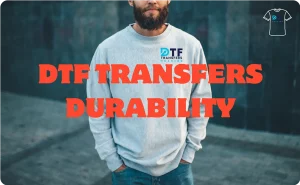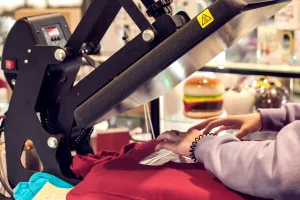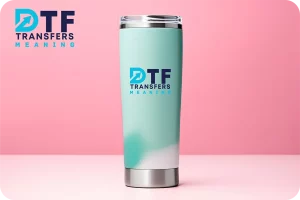Table of contents
- Introduction
- What is DTF Transfer?
- Required Materials for DTF Transfers
- The Durability of DTF Transfers
- Color Fidelity in DTF Transfers
- Cost-Effectiveness of DTF Transfers
- Suitable Fabrics for DTF Transfers
- Resolution and Detail in DTF Transfers
- Environmental Impact of DTF Transfers
- Troubleshooting common DTF transfer problems
- DTF transfers future
Introduction
Direct-to-film (DTF) transfers are striking innovations in the diverse printing landscape as a technique that offers both versatility and quality. This article tackles the most frequent ten questions that are often asked about DTF transfers, covering all aspects of this cutting edge technology.
Brief Overview of DTF Transfers
DTF transfers occur when a design is printed on to an intended type of specially treated film and then heat pressed into different types of fabrics. This technique is hailed for the capability of producing bright images with high definition across a vast array of substrates.
Relevance in Modern Printing
In contemporary printing, DTF transfers are a major development. They provide solutions to those demanding large-scale production and productions of bespoke orders made only in small batches. Its adaptability and efficiency make it an increasingly common choice.
What is DTF Transfer?
Definition and Basic Process
Direct to Film, or DTF transfer, involves printing graphics on a special film and then transferring it onto the fabric using heaters and pressure. This technique is a remarkable one due to the accuracy of its design and ability in working with complex, colorful designs.
Comparison with Other Printing Methods
DTF is unique compared to traditional methods such as screen printing that requires lengthy setup for every color. DTF is not restricted by the type of fabric, as opposed to DTG. Hence, this approach promises more freedom in use.
Required Materials for DTF Transfers
Essential Supplies List
A DTF printer, used for the manufacture of different goods in this technology; DTF colored inks are also needed and transfer films to load them into ; powder adhesives – substances producing a strong association between fabric material after its impregnation with ink will be required. Also, process requires heat press that has been designed specifically for work associated to implementation of each component is essential in providing the preferred level of print.
Recommendations for Quality Materials
For the best results, it is important to use high-quality inks and are made from premium transfer films. This results in long-lasting and vibrant prints.
The Durability of DTF Transfers
Lifespan and Wear Resistance
DTF prints are well-known for their strength. Applying transfers correctly can withstand many wash cycles without fading or peeling, and perhaps even surpasses the lifecycle of numerous traditional print methods.
Care Instructions to Prolong Lifespan
For long-term DTF prints, you should recommend washing the garments inside out with low temperature water and not high heat drying.
Color Fidelity in DTF Transfers
Ensuring Accurate Color Reproduction
Accurate reproduction of colors is one major strength of DTF transfer. The company does this by proper printer calibration and good ink formulations.
Tips for Color Matching
When it comes to proper color matching, consistent printer settings and appropriate using of a Color Management System is crucial. Calibration of your printer at regular intervals will ensure continued consistent color output. Testing is always crucial for you to get a great result.
Cost-Effectiveness of DTF Transfers
Initial Investment vs. Long-term Benefits
While the actual course of setting up DTF might be rather expensive, but as it comes to a long run advantage which refers to reduced costs and high efficiency especially in case small-to median range runs.
Comparing Costs with Other Methods
DTF is relatively cheaper than methods such as screen painting for small budgets, since it takes possibly reduced times to set up and very little waste.
Suitable Fabrics for DTF Transfers
Range of Compatible Materials
DTF transfers have their versatility and that they are applicable on quite a wide variety of materials such as cotton, polyester, blends which provide for them to be usable to even more applications than most traditional methods.
Limitations and Considerations
But, DTF printing could be challenging when it comes to fabrics that dark or heavily textured surfaces, too. Therefore, it is recommended to make tests of certain materials before processing a large order.
Resolution and Detail in DTF Transfers
Achievable Detail Levels
One of advantages located at DTF is the fact that it also can be able to produce design with a lot or high level details compared to traditional printing methods.
Factors Influencing Print Quality
The quality of the final print is mostly affected by details including; that of a DTF printer and its resolution, the type and quality inks as well as films used during printing process plus precision while heat pressing.
Environmental Impact of DTF Transfers
Sustainability Concerns
Although DTF printing has many advantages, there are also some environmental issues as well. There is a constraint in the waste of materials and how they will be disposed off; especially non-recyclable ones used heavily by nowadays printers’ consumables.
Practice of eco-friendliness in DTF Printing
In some of these challenges, addressing them by implementing eco-friendly practices like using biodegradable films and environmentally friendly inks can help reduce the impacts on the surrounding world, hence making DTF more viable.
Troubleshooting common DTF transfer problems
Specific problems and solutions
Common issues with DTF printing include incorrect colors, film removal, and ink spills. These can often be improved by making changes to the text and ensuring that consistent features are used.
Preventive measures
Regular printer maintenance, use of recommended operating procedures and adherence to best practices can prevent many common problems with DTF printing.
DTF transfers future
Emerging trends and technologies
The future of DTF printing looks promising, with advances in ink technology, environmentally friendly practices and advanced printing technologies expected to propel the industry forward forecasts of industry growth. Perhaps the continued development of DTF technology can make it more accessible and sustainable, and it could become the preferred method of textile printing in various industries





